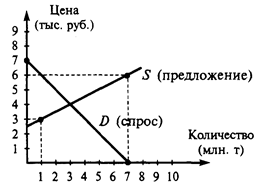Indo-European Family of Languages
The family to which English belongs is the Indo-European family. It consists of many groups of languages. The Germanic, or Teutonic, group includes the Scandinavian languages--Danish, Norwegian, Swedish, and Icelandic. German is commonly divided into High German and Low German. High German includes the dialects of southern Germany, the dialects of Austria, and the German dialects of Switzerland. Dutch, Flemish (spoken in Belgium), and the dialects of northern Germany make up Low German. Afrikaans, an offshoot of Dutch, is spoken in South Africa. English, which is also a Germanic language, is closely related to Dutch. But even closer to English is Frisian, spoken mostly in the northern Netherlands. Yiddish, a language of the Jewish people, is for the most part a High German of the Middle Ages. The Romance group descended from Latin. After the Roman Empire fell apart, the Latin dialects of the different regions grew farther and farther apart. Best known of the Romance languages are French, Spanish, Portuguese, Italian, and Romanian. Provencal, a name for the dialects of southern France, is sometimes considered a separate language. Catalan is spoken mostly in eastern Spain. Romansh is spoken in Switzerland. The Balto-Slavic group consists of the Baltic languages and the Slavic languages. Lithuanian and Latvian (or Lettish) are Baltic languages. The Slavic languages include Russian, spoken in Russia; Ukrainian, spoken in Ukraine; and Byelorussian (or White Russian), spoken in Belarus. Czech and Slovak, spoken in the Czech Republic and Slovakia, are closely related. Indeed they might be called varieties of the same language. Serbo-Croatian is one language written in two alphabets--Croatian in Roman letters, Serbian in the Cyrillic alphabet. It is spoken chiefly in Serbia. Other well-known Slavic languages include Polish and Bulgarian. (See also Writing.) The Celtic group of languages, once spoken over a large territory, today is used only in the British Isles and northwestern France. The number of speakers is small. Irish Gaelic and Scottish Gaelic are Celtic languages. Welsh, spoken in Wales, and Breton, a language of Brittany in northwestern France, form another branch of Celtic. The Indo-Iranian group consists of Indic languages and Iranian languages. Persian (or Farsi) is an Iranian language. So are Pashto (or Pushtu), spoken in Afghanistan and Pakistan; and Kurdish, spoken in Kurdistan. Baluchi, spoken mostly in Pakistan and Iran, also is an Iranian language. Sanskrit is an Indic language. It is the oldest living Indo-European language, now used chiefly as the sacred language of Hinduism. Hindi, the leading language of northern India, and Urdu, the national language of Pakistan, are also Indic languages. Both Hindi and Urdu are varieties of the same language. But Urdu has more Persian and Arabic words and is written with a different alphabet. Other Indic languages include Bengali, Panjabi, Gujarati, Marathi, Rajasthani, Bihari, Kashmiri, Oriya, Sindhi, Assamese, and Nepali. Sinhalese, spoken in Sri Lanka, is also an Indic language. And so is the language of the Gypsies, Romany. Greek belongs in a separate group. The same is true of Armenian and of Albanian. An Indo-European language called Tocharian was once spoken in what is now Xinjiang, China. The language of the Hittites, a people of Anatolia mentioned in the Bible, was also Indo-European.
|




